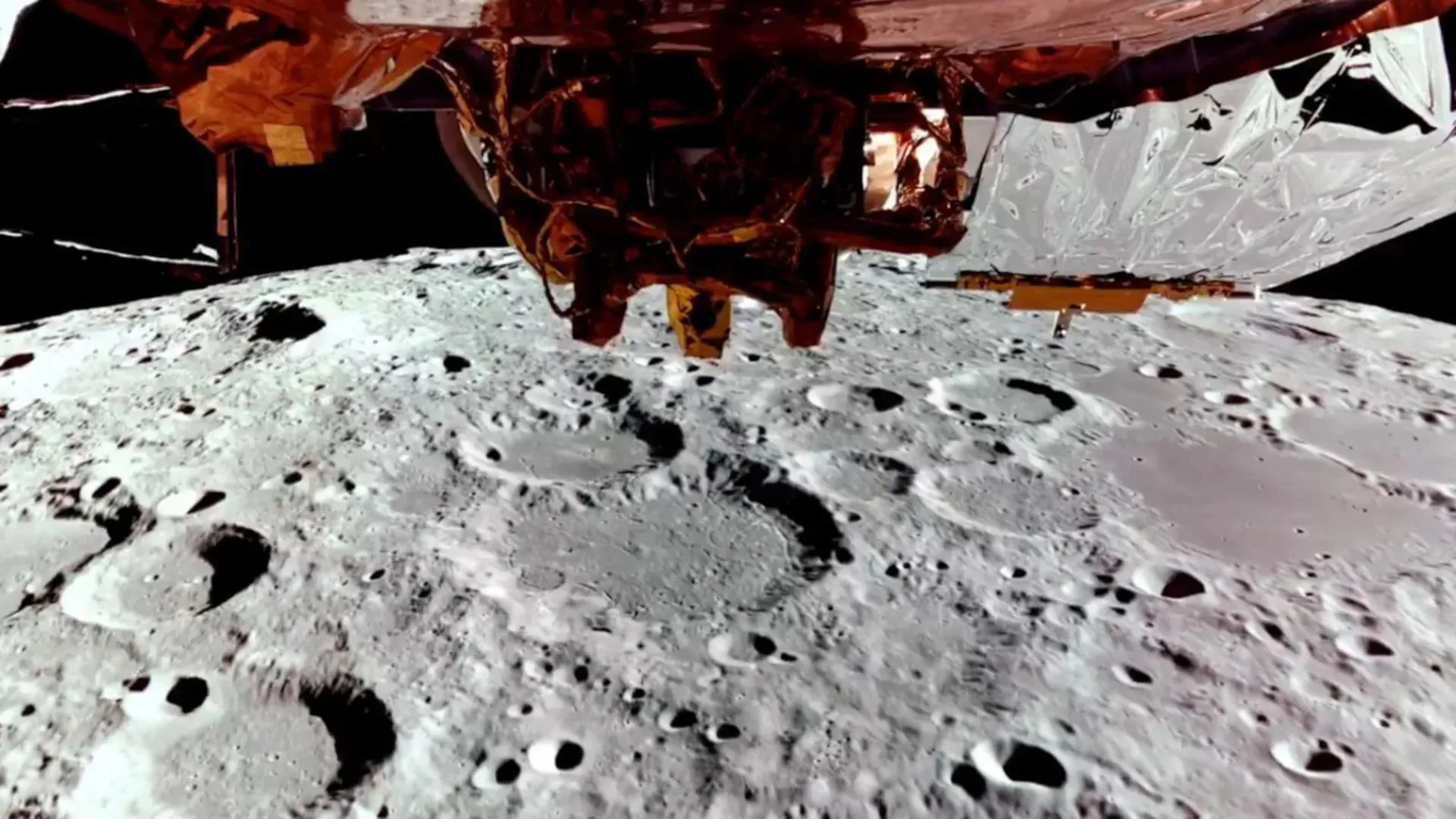Firefly Aerospace’s Blue Ghost Mission 1 will try a landing on the uncharted face of the Moon at 3:34 AM ET (12:20 PM IST) Sunday. The lander is going for a landing near Mons Latreille, a volcanic rim in Mare Crisium on the Moon’s northeastern near side. If this mission succeeds, it will join the second commercial spacecraft to be on the Moon.
The firm confirmed its preparedness on Saturday night, posting on X, “Blue Ghost is ready to take the wheel!” as flight controllers executed a pivotal move to decrease the spacecraft’s orbit.
Mission “Ghost Riders in the Sky” Advances Lunar Exploration
This mission, code-named “Ghost Riders in the Sky,” is the follow-up to the first-ever commercial lunar landing and is part of NASA’s campaign to partner with private industry to reduce costs and enable the Artemis program to return astronauts to the Moon.
Liftoff on January 15 aboard a SpaceX Falcon 9 rocket, the golden lander, about the size of a hippopotamus, has taken stunning photos of Earth and the Moon. It hitched a ride with a Japanese lander, which hopes to make its own lunar landing in May.
February 24, the Blue Ghost descended to a lower orbit and released detailed photos of the far side of the Moon. Firefly posted a 93-second compilation of the recordings on February 26, as follows: “That feeling when you look outside and see you’re nearly home!”
That feeling you get when you look out the window and realize you’re almost home! T-4 days until we land in the Moon. Blue Ghost will reach her final destination no earlier than 2:34 am CST on March 2. We’ll start the joint livestream with @NASA at 1:20 am CST, approximately 75… pic.twitter.com/t5TN85zpmM
— Firefly Aerospace (@Firefly_Space) February 26, 2025
Scientific Payloads Carrying on Board Blue Ghost
As a part of the Commercial Lunar Payload Services (CLPS) program by NASA, Blue Ghost transports 10 NASA science instruments to assist in lunar research.
- One instrument will probe the Moon’s interior up to 700 miles deep.
- Cameras onboard will capture X-ray images of Earth to study space weather’s impact on Earth’s magnetic field.
- Another camera will document the lander’s descent to aid future missions.
- The payload includes a lunar soil analyzer, a radiation-tolerant computer, and an experiment testing global satellite navigation on the Moon.
The lander has been built to function for 14 Earth days and will document a total solar eclipse on March 14, when Earth obstructs the Sun from the Moon’s skyline. On March 16, it will photograph a lunar sunset, assisting scientists in examining how solar radiation leads to dust levitation—shedding light on the enigmatic lunar horizon glow initially noted by Apollo astronaut Eugene Cernan.
Mare Crisium: A Distinctive Lunar Region
Mare Crisium, a 350-mile-wide impact basin subsequently filled with lava, is one of the Moon’s dark spots seen from Earth. Ancient astronomers were misled into believing that these dark patches, called “maria” (Latin for seas), held water.
In contrast to the connected lava plains where Apollo missions touched down, Mare Crisium stands alone. Scientists think its geological makeup is distinct from other parts of the Moon, so it is an important place to obtain geophysical information. Blue Ghost from this location could offer the first glimpses of the Moon’s larger surface structure.
With excitement growing, the mission is an important step in opening up lunar exploration and leading the way for future manned missions.






















